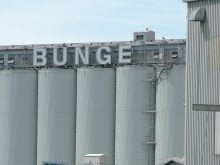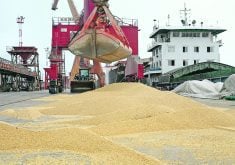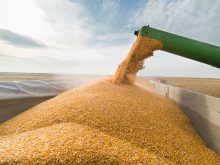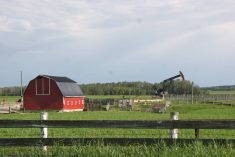Feeders up
The heat soared in the feeder cattle market with prices up $1-$6 per hundredweight on steers and heifers last week.
It doesn’t seem to matter that the barley price has climbed or that break-evens are looking scary.
For example, 700 pound steers were quoted to $1.67 per lb. and 800 lb. steers reached $1.50.
The higher prices and poor grass conditions drew cattle to the auctions.
Volumes were up 40 percent over the week and 74 percent over last year.
Canfax said the strong market might pull some August cattle into the July market.
Read Also

Flax sector sees omega-3 opportunity
SASKATOON — A global shortage of omega-3 oils could be an opportunity for the flax sector, says an industry official….
Slaughter cow prices were $2.50 per cwt. lower.
They are expected to fall more as plants that have led the run on cows for the burger market have found adequate volumes.
In stock cow trade, bred cows sold from $850-$1,350 with no bred heifers to speak of. Cow-calf pairs traded were $910-$1,300 on poor to medium types, with quality sales up to $1,850.
Strong fed cattle exports
A lighter offering combined with strong sales to the United States forced western Canadian packers to bid up fed cattle prices last week.
The steer average gained $2-$2.25 per cwt. while heifers were up $3.30, partly due to a better quality offering.
Discounts on cattle weighing more than 900-925 lb. are commonplace. Weights are creeping up. The Alberta steer weight rose five lb. from the previous week to 823 lbs., 53 lb. heavier than late April.
Alberta prices July 19 were steers $97.75-$101 per cwt., flat rail $163.90-$164.65 and heifers $99.75-$100.20, flat rail $165.35.
Prices should hold their recent gains assuming the U.S. can trade near the $72 mark.
A critical factor in the week to week trend has and will be the number of cattle being exported.
U.S. interest will keep a solid floor on the local market.
Summer holiday time often means slower beef movement due to consumers being away from their regular routine and shopping. That appears to be the case currently.
Most also believe that high retail beef prices are also hampering sales. Retailers tend to be operating in a hand-to-mouth fashion, buying as they need.
The Montreal wholesale price is steady at $163-$164 per cwt. while the Calgary market is up $2 with handyweight steers at $157-$171 and heavies at $153-$155.
Substantially lower hide prices have hurt byproduct values.
Placements heavy
The U.S. Department of Agriculture’s monthly cattle-on-feed report July 20 showed American cattle feeders placed animals in record numbers last month.
Perhaps more significant, they bucked a recent trend of placing predominantly lighter weight animals into feedlots.
The immediate market reaction was lower fall futures prices at the Chicago Mercantile Exchange.
The October contract was the hardest hit because a large chunk of June placements would presumably be ready for market this fall.
Hog price down
Weekly average hog prices fell on both sides of the border last week.
The price picture early in the week looked stronger with slaughter down slightly and pork stocks down 24 percent from a year ago.
Frozen belly stocks were at a record low, but above analysts’ pre-report estimates.
However, higher prices for butts and bellies were offset by lower prices for loins and picnics to lower average wholesale pork prices as the week progressed, cutting into packers’ margins.
The Iowa-Minnesota daily direct hog price (mean, 51-52 percent lean, live equivalent) increased slightly to $52.37 US per cwt. on July 18, but declined to $51.95 the next day.
This week’s average U.S. hog price was 1.8 percent below the previous week’s average.














